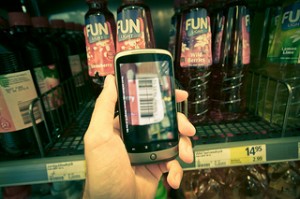 Page views, clicks, conversions—they’re harder to track today than ever before despite the fact that brand marketers have more tools to do so. The problem is the fragmented brand experience that happens as consumers interact with branded content and communications across multiple devices in a single day, a single hour, and even in a single minute.
Page views, clicks, conversions—they’re harder to track today than ever before despite the fact that brand marketers have more tools to do so. The problem is the fragmented brand experience that happens as consumers interact with branded content and communications across multiple devices in a single day, a single hour, and even in a single minute.
Consumer behavior has changed so much in the past few years with the maturation of the mobile device market. Today, consumers spend more time using their mobile devices than they spend watching television or using a computer. Not only do brand marketers have to connect with consumers based on the media channels they prefer and the specific types of content they consume, but brands also have to connect with them on specific devices.
The user experience on one device should rarely be the same as it is on another device. That means brand marketers have to develop more content than ever. Consumers demand personalization and user experiences that fit the media channel and the device. Once that content has been distributed and consumed, brand marketers still have to measure the ROI of their campaigns and efforts.
It wasn’t long ago that getting accurate metrics for online, social, and mobile audiences was challenging. Today, brand marketers have access to a massive amount of data, but the accuracy of that data leaves a lot to be desired. Not only are brand marketers challenged by distorted online advertising metrics due to traffic and click fraud, they’re also fighting against the overall degradation of data and the growing problems related to multi-screen consumers.
Today’s consumers have very fragmented experiences with brands. They’ll visit a brand website, interact with brand content, and see brand communications and ads from their work computers, home computers, smartphones, and tablets. How can brand marketers identify a single consumer who visits through these various devices using different IP addresses and in different locations as the same visitor? They can’t. Instead, the number of unique visitors is artificially inflated.
Similarly, brand marketers cannot accurately track conversions. How did a customer originally learn about a brand offer? It’s not necessarily from the link they followed to land on the brand’s offer page where conversions are tracked. They could have learned about the brand offer when they were using their smartphone and later visited the site from their home computer where they clicked on the link or took the action that put them on the “conversion” list. Brands are missing a huge piece of the buyer journey. As a result, future marketing campaigns could be created that rely on available data rather than “real” data, and those marketing campaigns will deliver poor results.
In short, brand marketers are tasked with delivering metrics, but until accurate metrics are available, particularly metrics that account for fragmented brand experiences across multiple devices, the struggle to calculate ROI continues.
What do you think? Leave a comment and share your thoughts.
Image: Miguel Ugalde
Lucy is Editor at Corporate Eye


